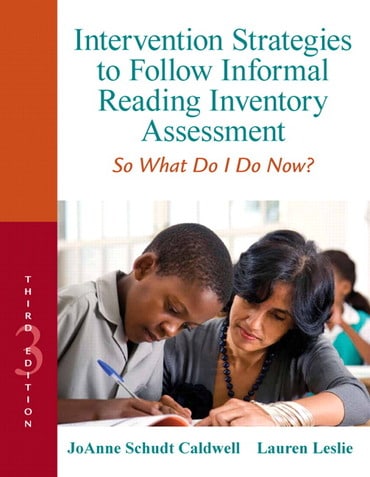Switch content of the page by the Role togglethe content would be changed according to the role
Intervention Strategies to Follow Informal Reading Inventory Assessment: So What Do I Do Now?, 3rd edition
Published by Pearson (September 11, 2012) © 2013
- JoAnne Schudt Caldwell Cardinal Stritch University
- Lauren Leslie Marquette University
eTextbook
$49.99
$51.99
Need help? Get in touch

Digital Learning NOW
Extend your professional development and meet your students where they are with free weekly Digital Learning NOW webinars. Attend live, watch on-demand, or listen at your leisure to expand your teaching strategies. Earn digital professional development badges for attending a live session.

